Tepoztlan – Mexico
Mexico has a treasure trove of seductive Spanish Colonial towns, where an amalgam of Spanish, Mexican, and pre Hispanic cultures, harmonize to create a magical, magnetic allure. For the past eleven years, I have become quite addicted to their charm, always seeking out somewhere new, as well as revisiting my favorites.
Tepoztlan has been mentioned time and time again by those Mexicans that I meet on my travels, who share my fascination with the colonial towns. They speak of it as having an almost spiritual aura; of the quality of the light and the air; and the majesty of the mountains.
It’s a one-and-a-half, to two hour drive, from Mexico City to Tepoztlan, depending on how long it takes to get through the city traffic. The drive is sensational. The road winds upwards into the dense lush forests that watch over the villages spread out on the valley floor.
We drove into Tepoztlan as the day waned, the sun caressed the tips of the mountains that coddle the town, and the sky blushed with a pink glow. What a welcome!
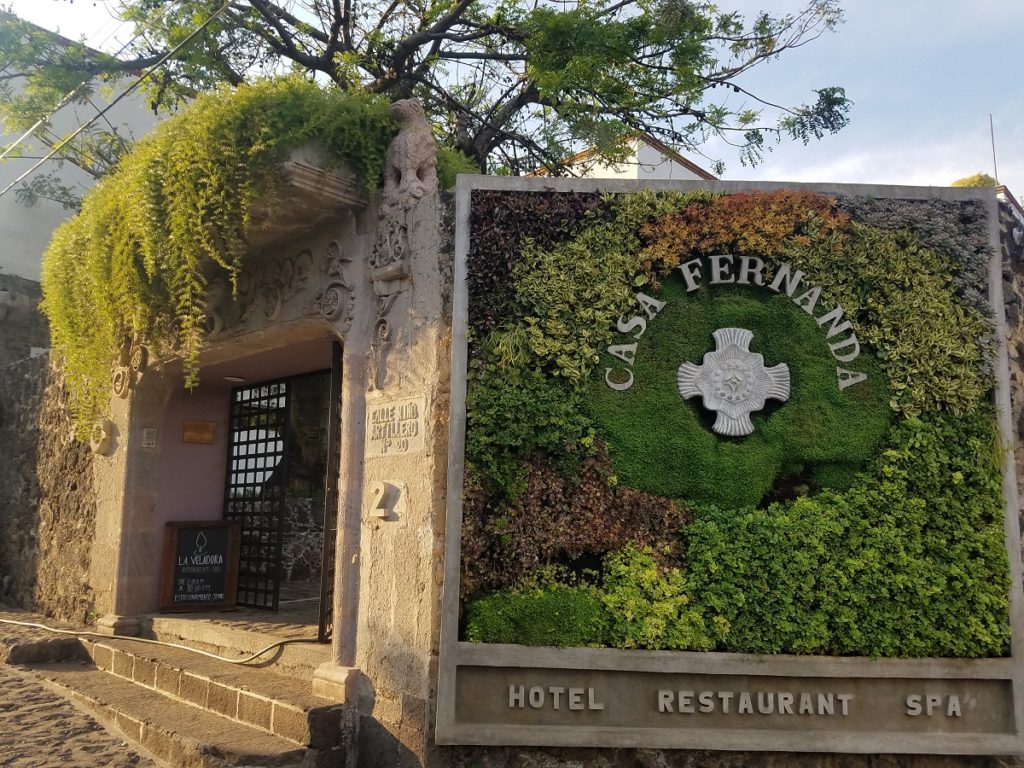
Casa Fernanda is a boutique hotel, where the architects and interior designers have masterfully created a welcoming and understated elegance .My suite on the upper floor had a full on view of the mountains; two tiny churches; the colorful houses with their worn, red tile rooftops; and the hotel’s artfully landscaped gardens. The patio–carpeted in freshly cut soft green grass–boasted an elevated tiled jacuzzi, long bean bag chaises, and lavender plants that welcomed me with their gentle fresh fragrance. The sound of water from the wall fountains in the courtyard below, created a soothing background melody.
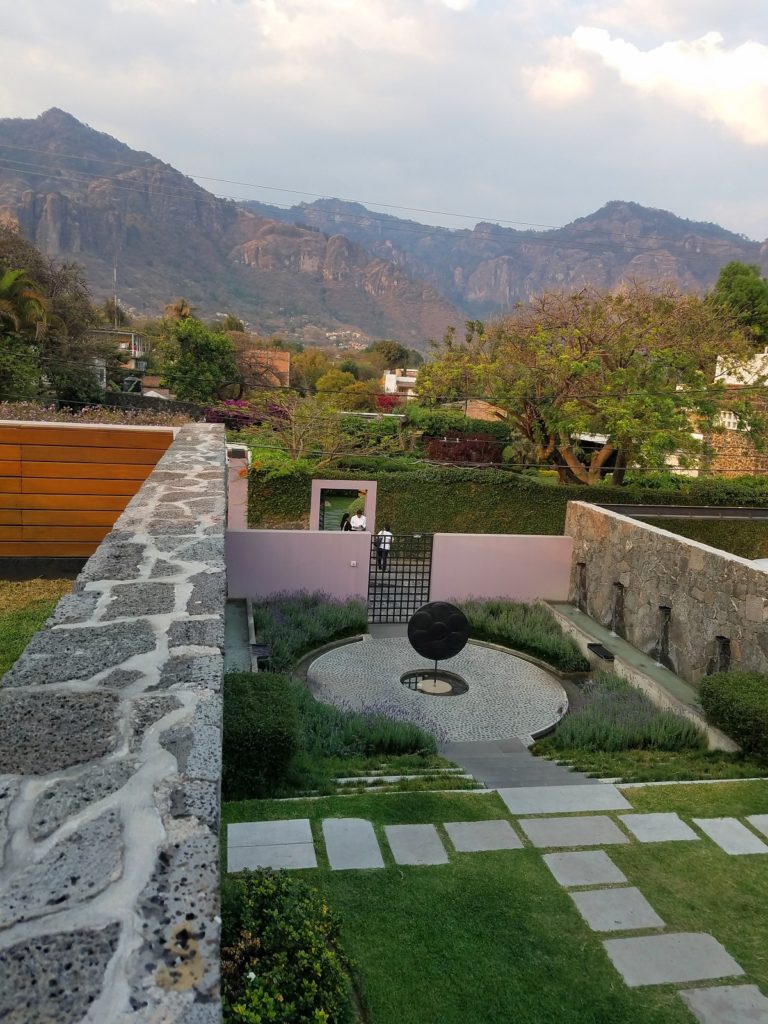
Throughout the property there are thoughtfully placed pieces of sculpture created by Mexico’s finest sculptors. One look at that setting, and I could feel the tension and stress of life in Los Angeles seep out of me and slink away.
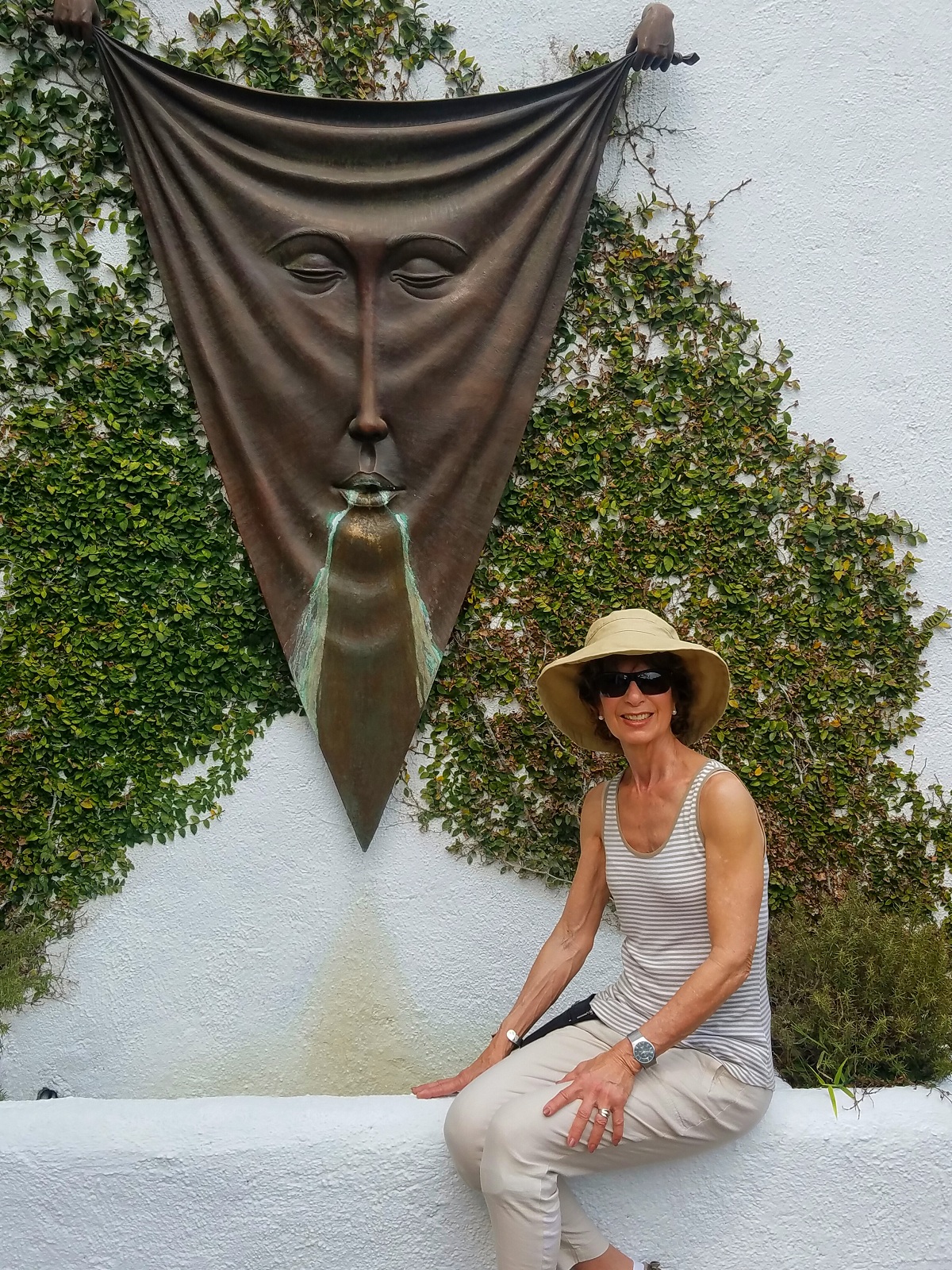
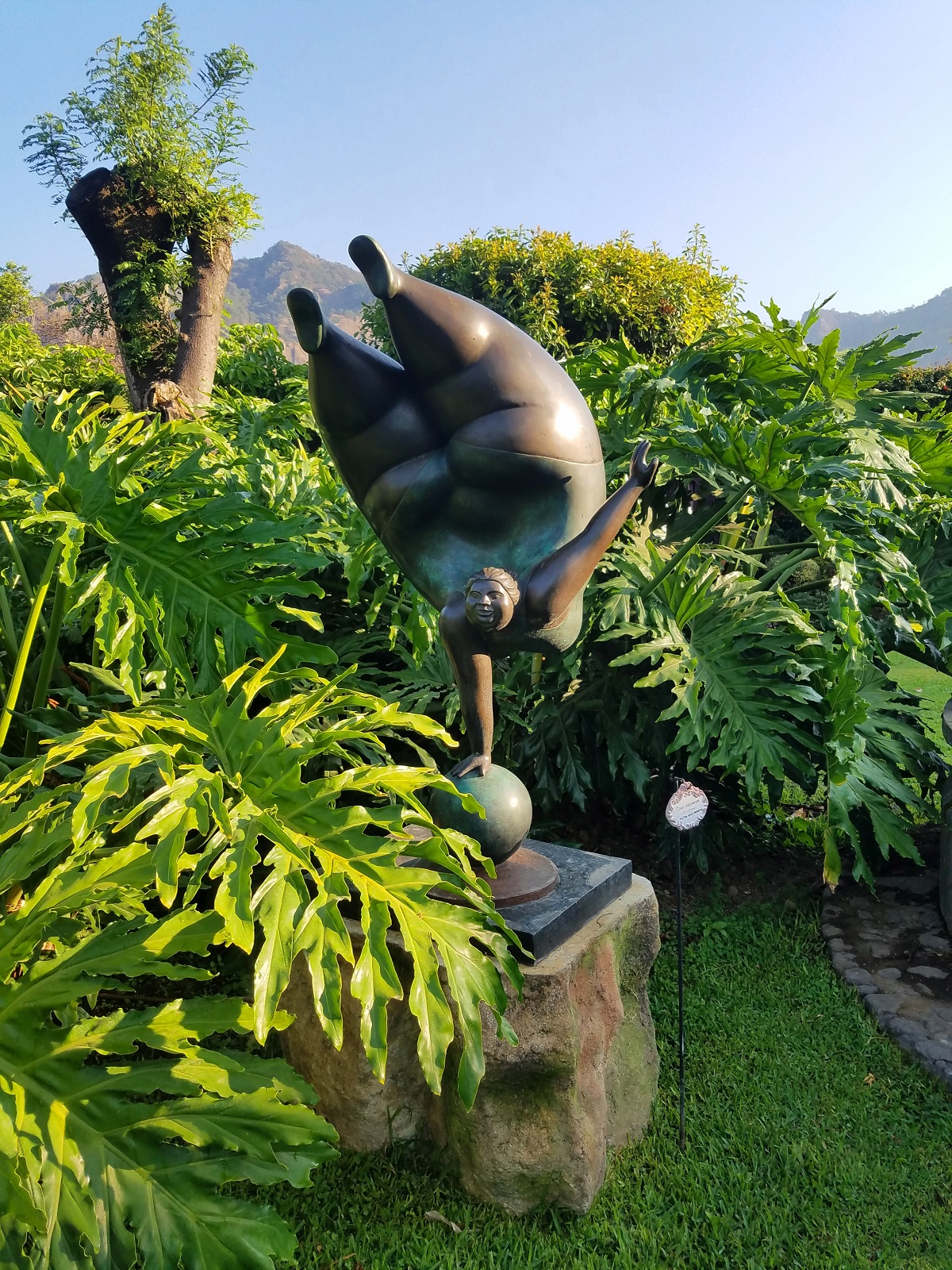
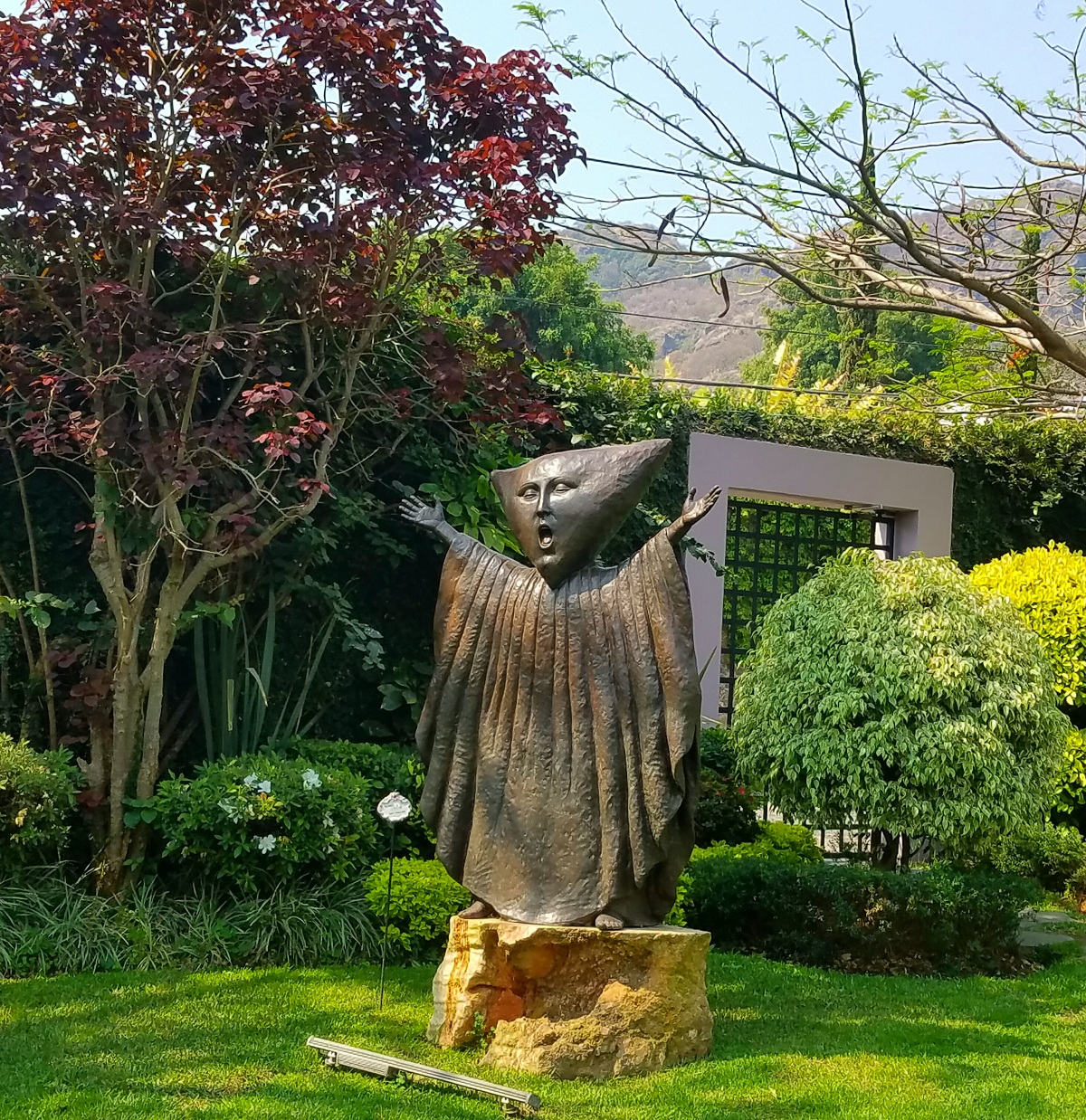
I spent my days uncovering the sights of Tepoztlan, wandering the steep cobblestone streets, admiring the murals, the doorways, the brightly colored hand-made basketware, and the bakers at work with their long paddles, constantly working their ovens which are constructed either from bricks or clay.
Each batch of bread or tray of pastries is watched over throughout the baking process, until they turn a perfect golden color. The aroma wafting down the narrow streets is mouth-watering.
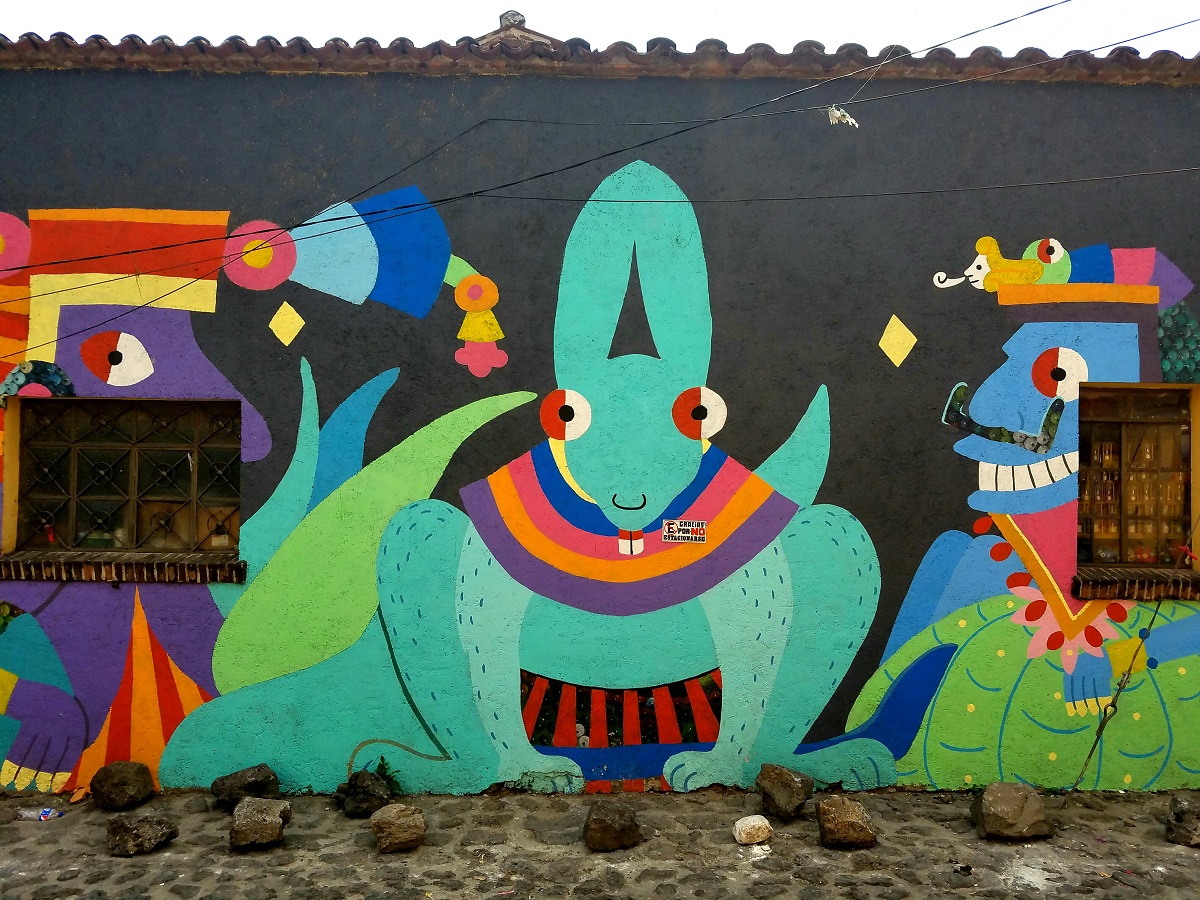

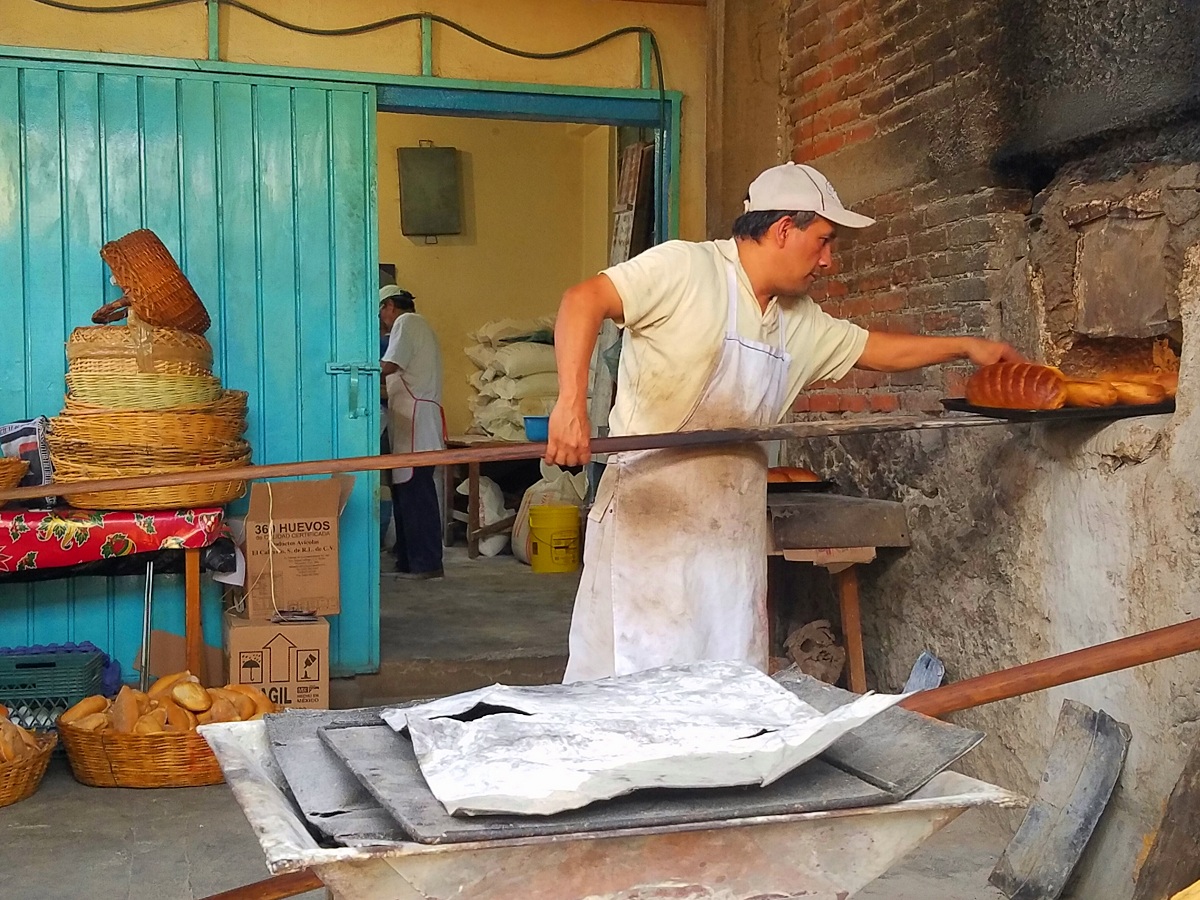
In the extensive market the sweet scent of plump juicy fruit-ripened on the trees to perfection- fills the air. The smell is so exquisite, the colors so intense, that it’s like being soaked in a big bowl of fruit salad.
Mexicans love color and use it boldly on storefronts and in their homes. The effect is cheerful and uplifting.
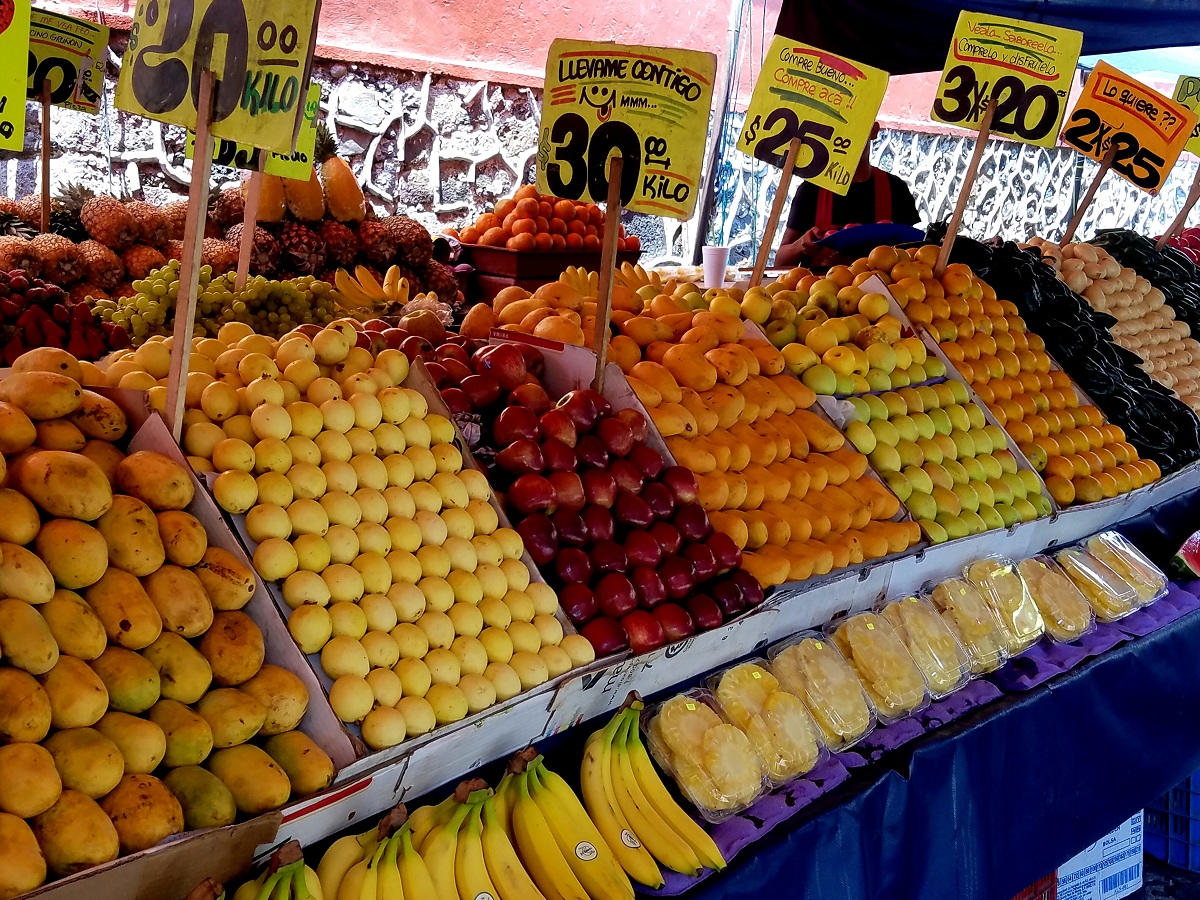
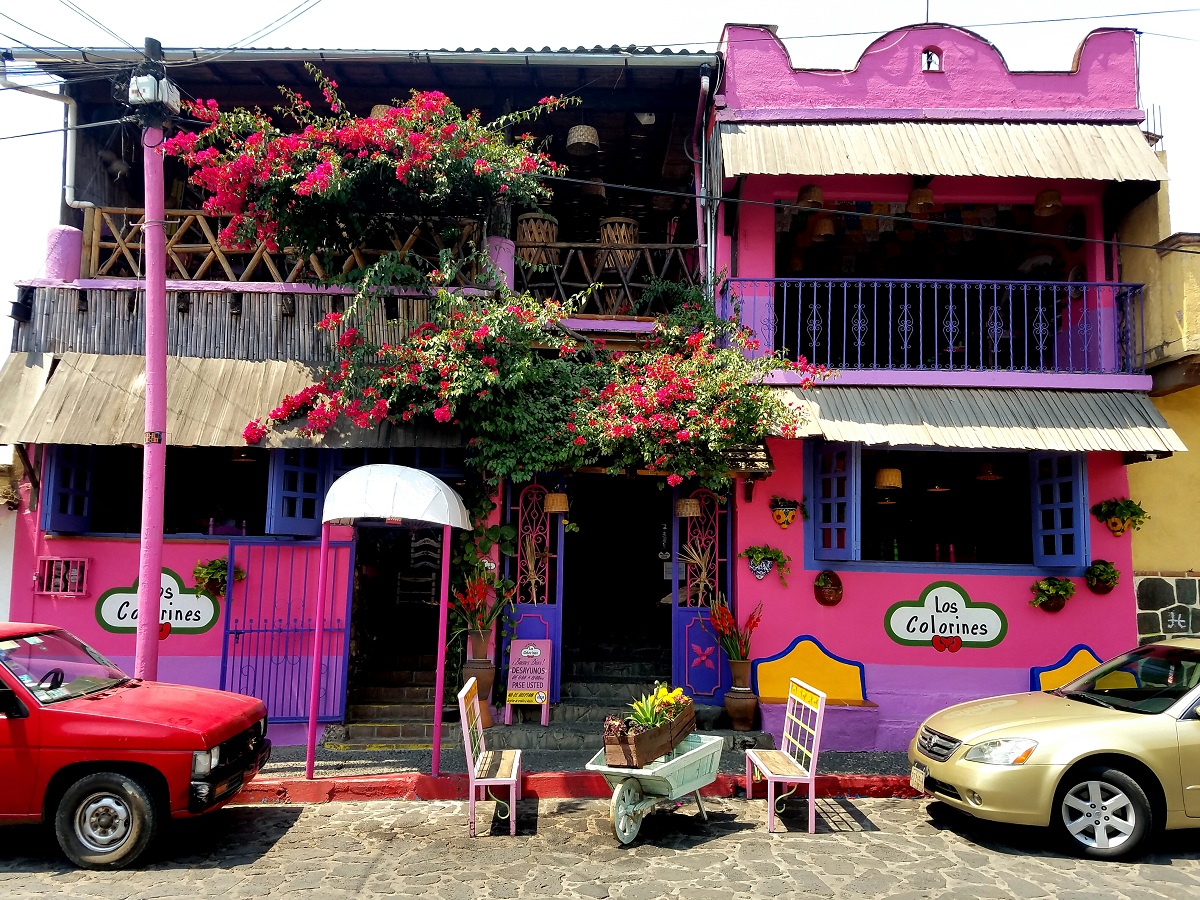
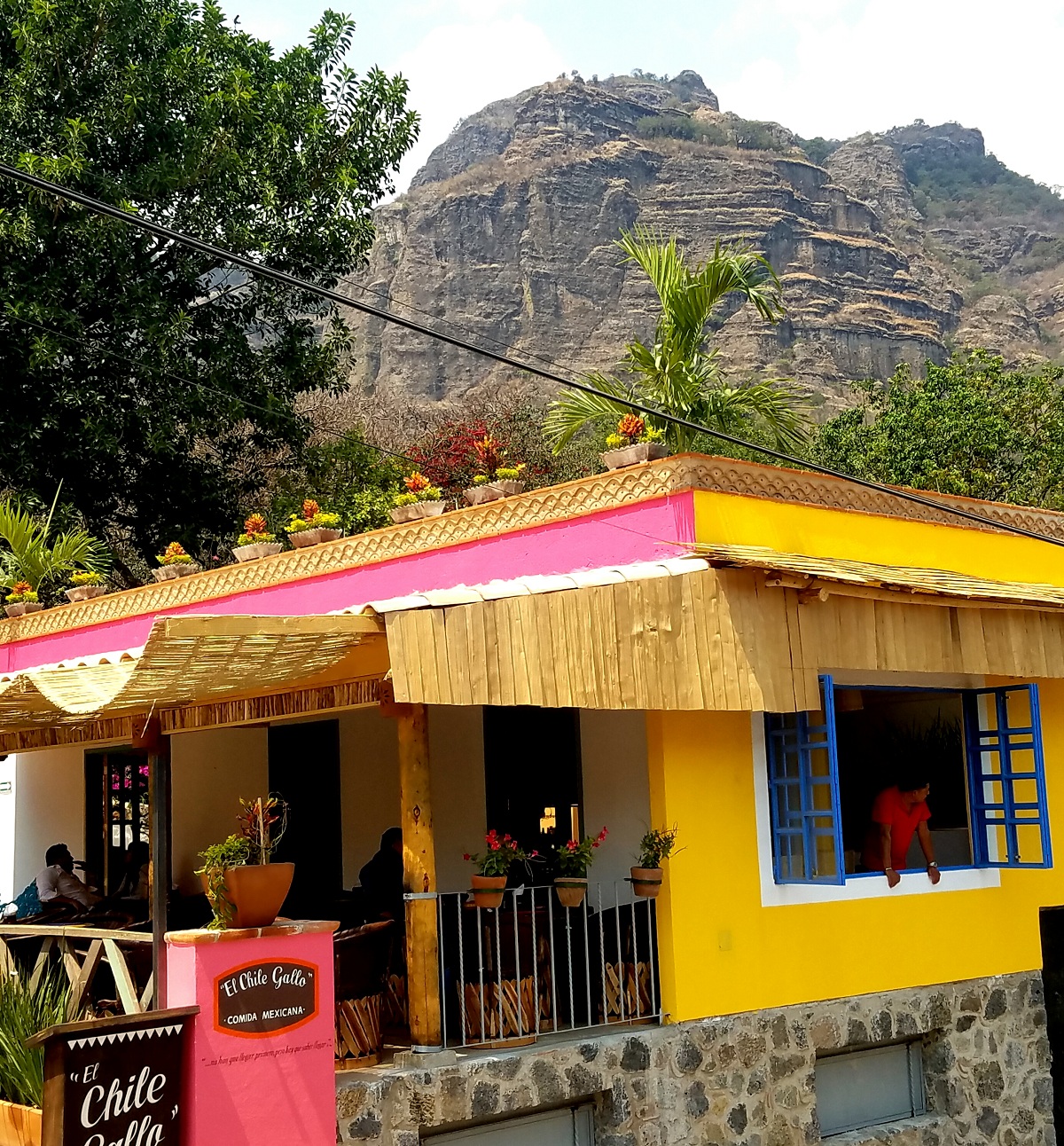
I visited the 16th century Parroquia de la Natividad–its interior beautiful in its simplicity–the only adornment being hand-painted murals. The adjacent Convento Dominico de la Navidad–is one of the most spellbinding, peaceful, monasteries that I have visited in all my travels. One doesn’t anticipate finding something so substantial in a little town like Tepoztlan.
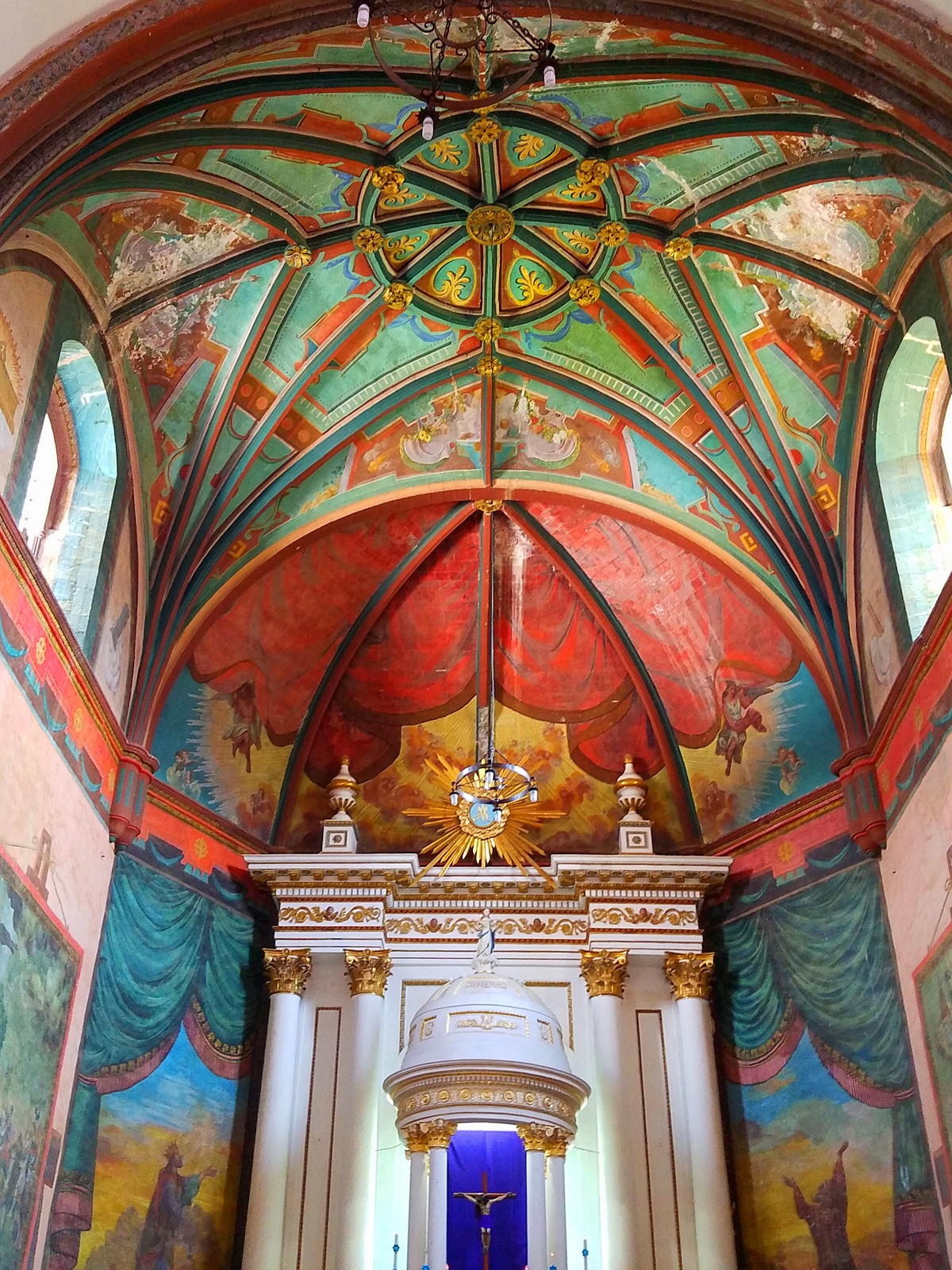
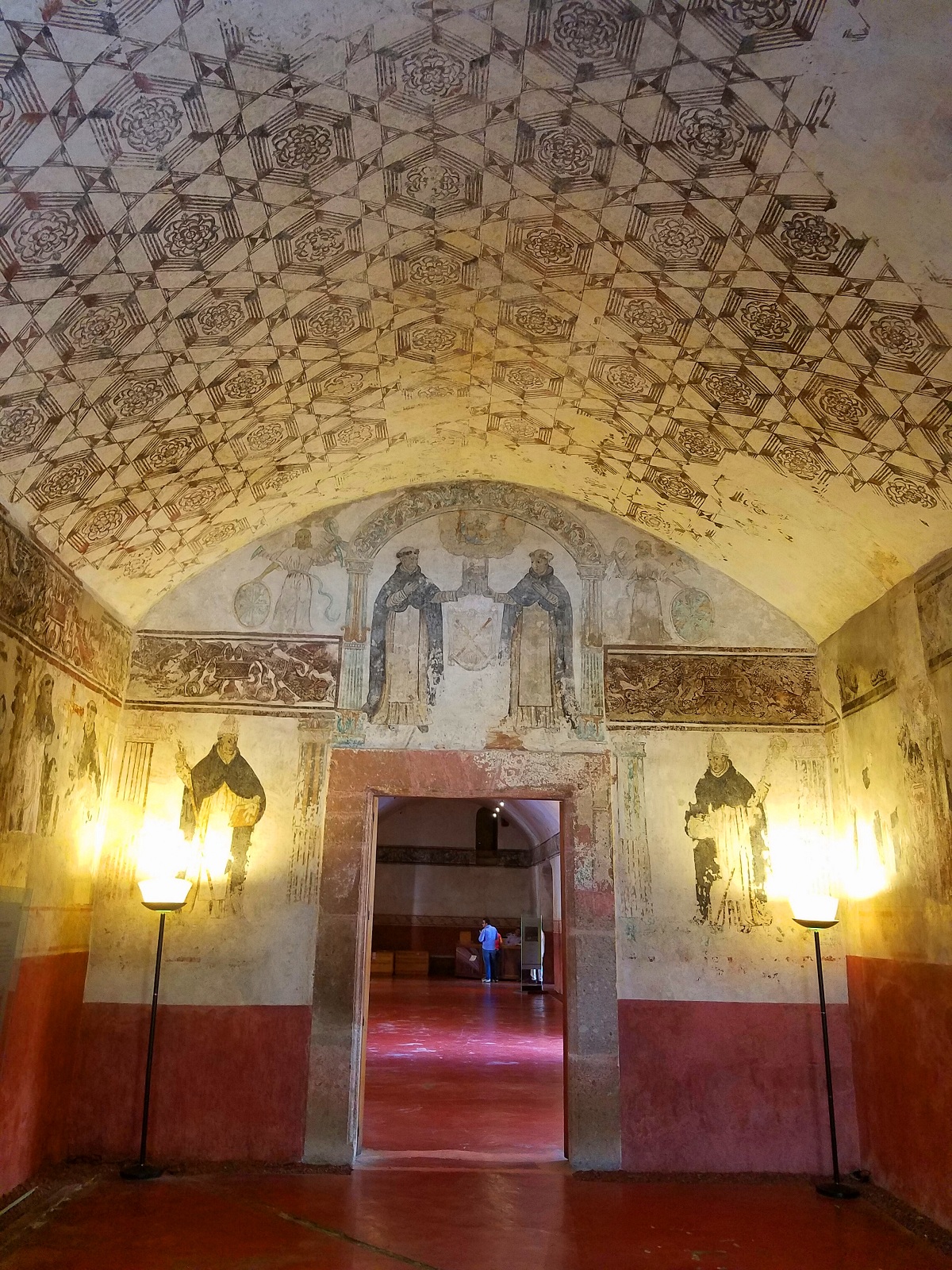
Early one morning, I set out to hike to El Piramide del Tepozteco. The hike exceeded my expectations in every way: It’s a grueling, challenging climb skywards on a ‘pathway’ of rocks and boulders and makeshift stairs; the lush forest is cool and quiet; exotic bromeliads cling to the strong sculpted limbs of trees; vines drip, tangle, and climb; the mountain peaks soar above the forest canopy; and the only sounds are the singing of the birds and one’s footsteps. While the pyramid at the very pinnacle is not the most impressive, the view is stunning and the hike, exhilarating.
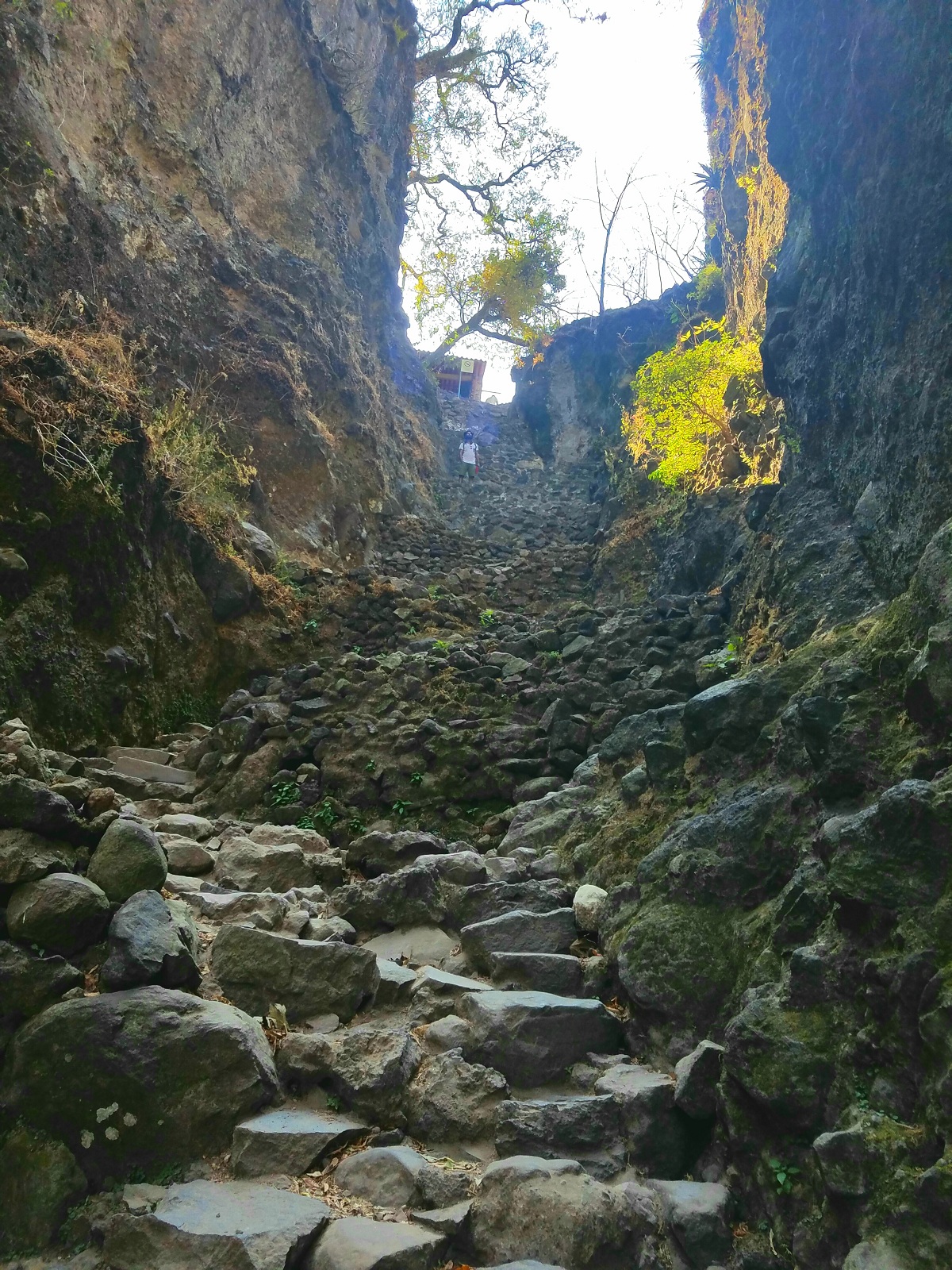
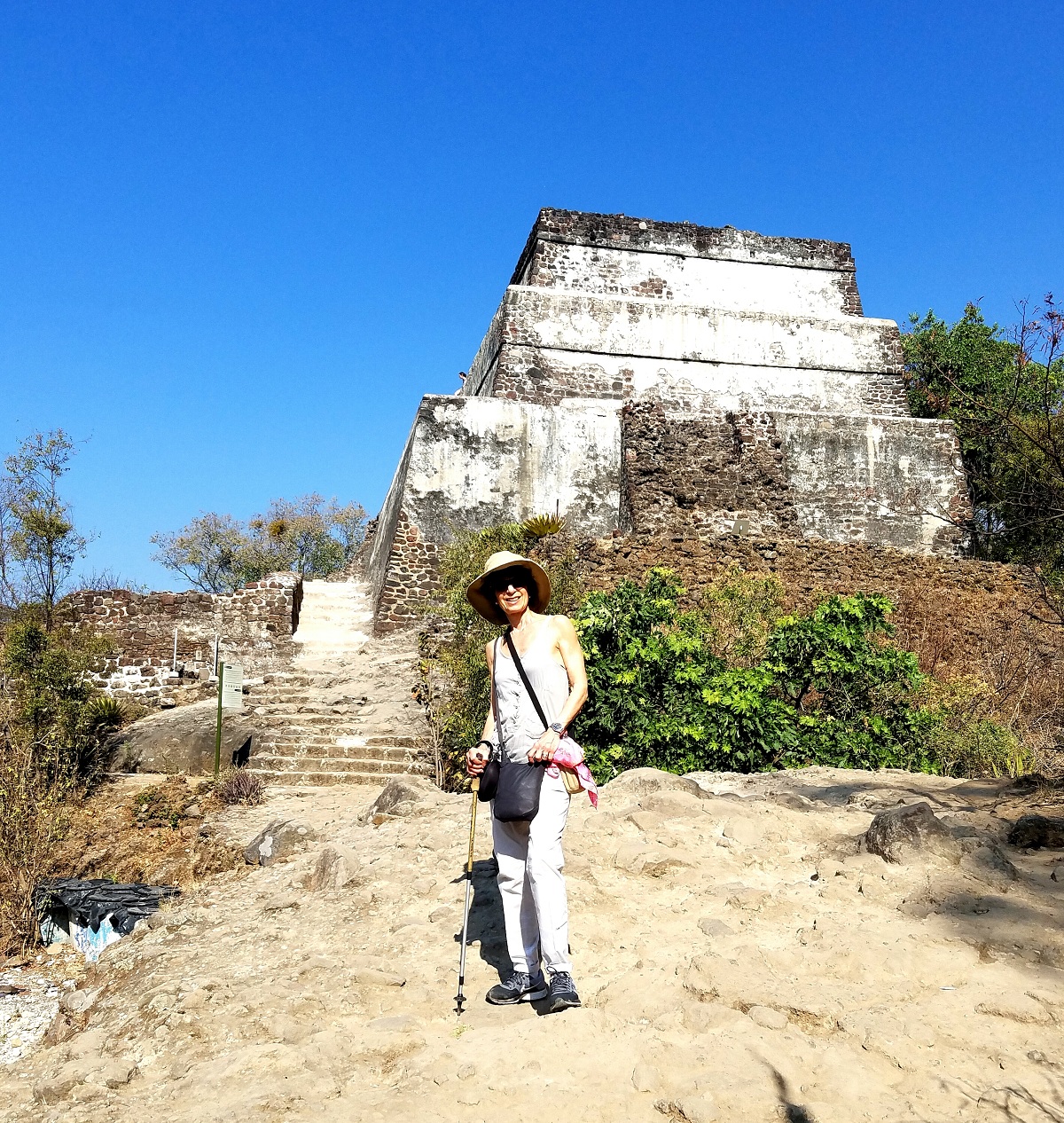
Another day, I caught the luxurious Costa Line bus from Cuernavaca to Taxco–famous for its silverware and its alluring charm–which is still as captivating as it was when I last visited, twenty plus years ago.
Saturdays are THE day to be in Tepoztlan. Artisans from all the surrounding areas set up stalls along the cobbled streets, visitors stream in from Mexico City and Cuernavaca, and the little town pulsates with life, color, and music. Restaurants that are often closed during the week are filled to capacity, the market place is double its usual size, and there is not a hotel room to be had.
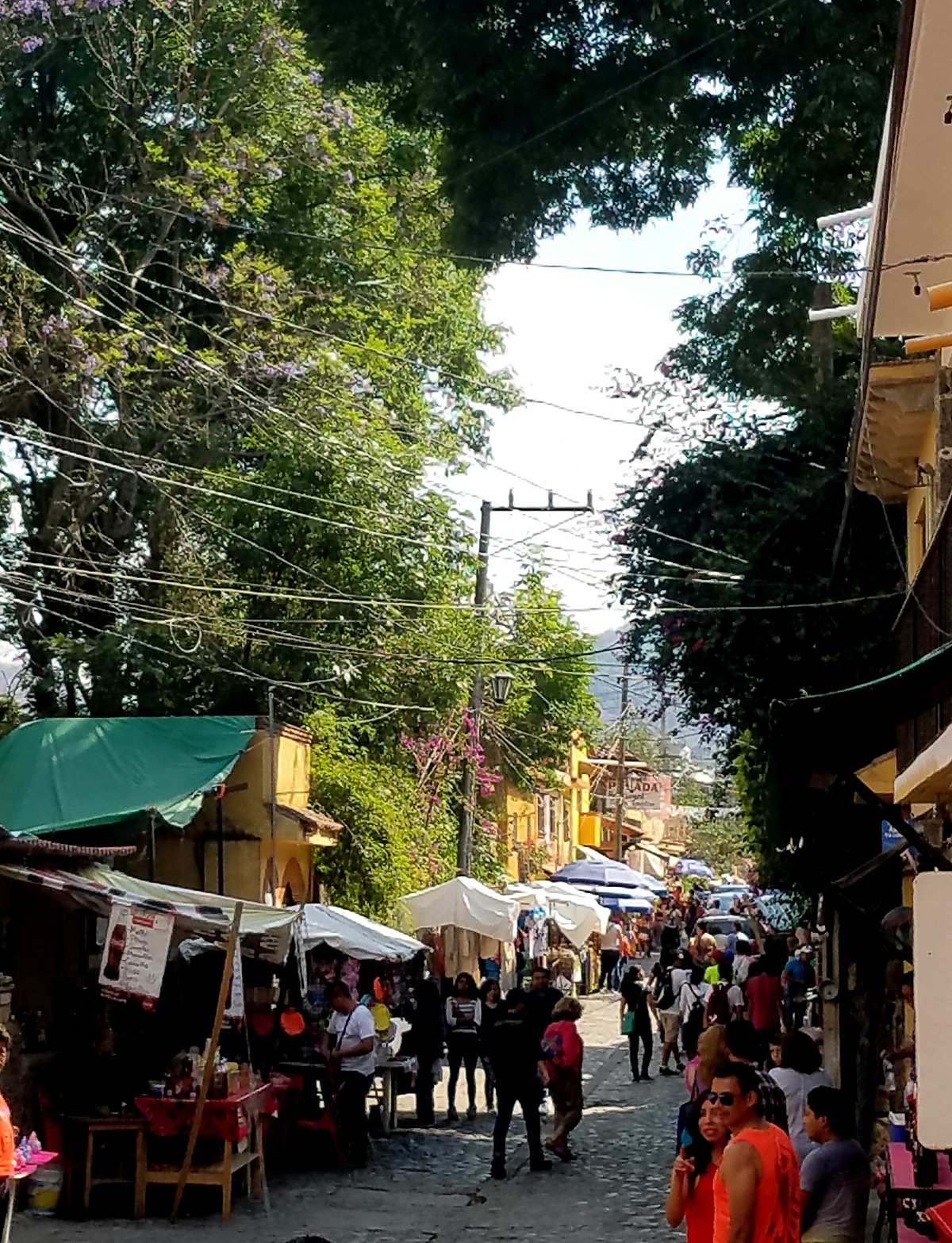
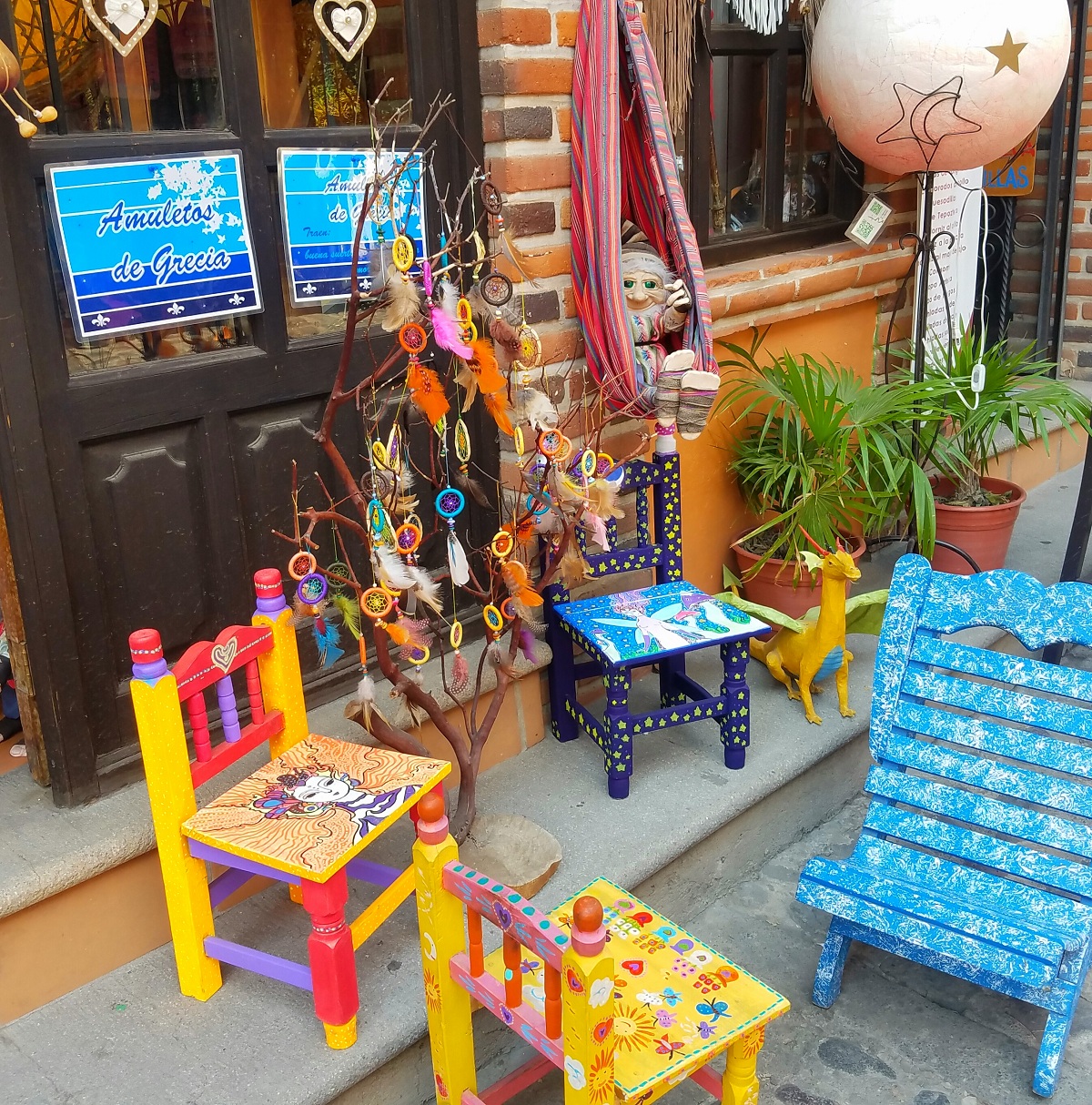
I spent a few hours every afternoon in the gardens of Casa Fernanda reading and soaking up the beauty of my surroundings.
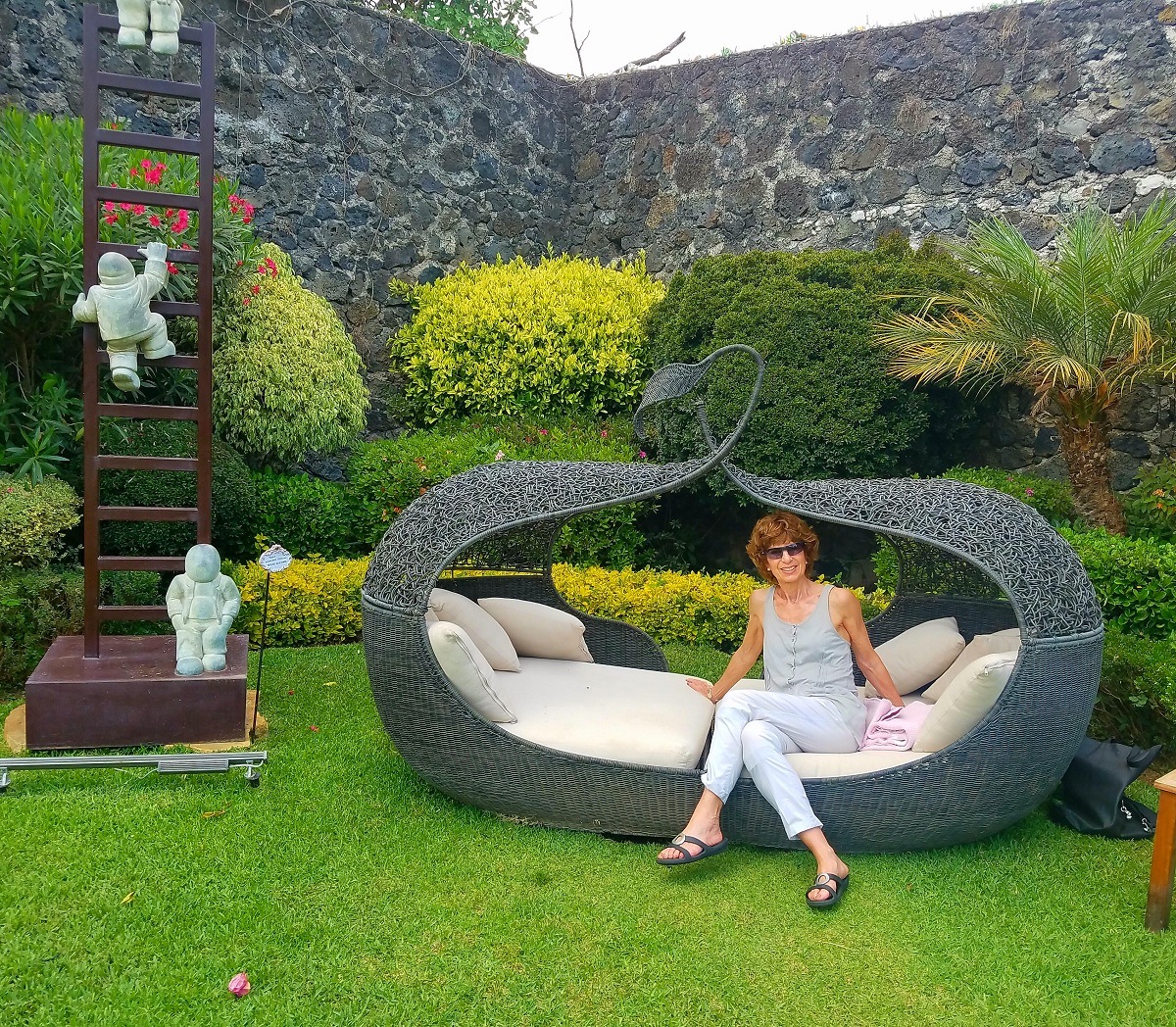
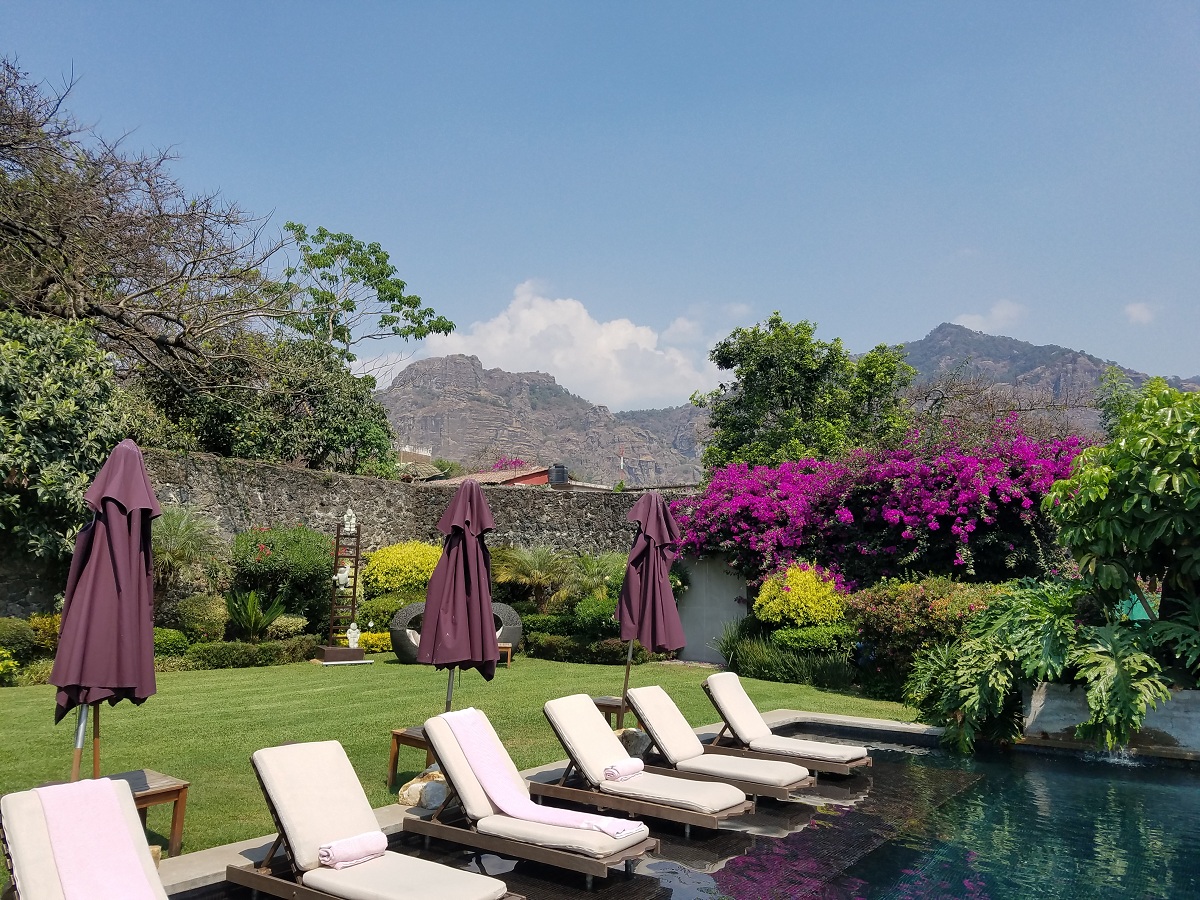
At night, I soaked in my patio jacuzzi under a full moon. The lights of the village twinkled below; the outline of the mountains loomed in the distance and the beat of joyful Mexican music drifted towards me.
Tepoztlan certainly lived up to its reputation.
